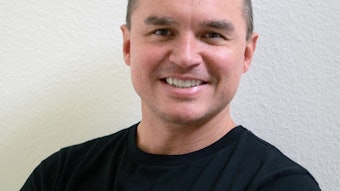
By Inga Hansen, executive editor of MedEsthetics
Recently, we had the opportunity to speak with Brent Saunders, CEO of Allergan, about the company’s operations following its acquisition by Actavis, the proposed merger with Pfizer and what he feels are the most promising trends for the medical aesthetics industry.
MedEsthetics: Earlier this year Allergan was acquired by Actavis. What kind of feedback are you getting from customers since the merger?
Saunders: “When I’m out talking to physicians and consumers, most of the feedback I get is that they’ve been impressed with the integration in that they haven’t noticed it. They’re also very excited about the commitment the new Allergan has brought to aesthetic medicine and plastic surgery—our investments in product flow, our investments in innovation, and our investments in training and education and in R&D.”
MedEsthetics: Are there any new products coming to market or on the horizon that you are particularly excited about?
Saunders: “We will continue to look at new indications for Botox. We will continue to bring—and complete—a line of fillers around the Juvederm VOLUMA brand and we are researching new indications in that area. We continue to invest in R&D in our breast implant business and then, of course, the big news this year was that we acquired KYBELLA for submental fat. We are now beginning to look at other indications and other uses for research studies for KYBELLA.”
MedEsthetics: There was a lot of excitement around the launch of KYBELLA. How is it being received now that it is on the market?
Saunders: “We’re still in the early phases. Our focus now and for the next few months will be on training and education. We’ve now trained well over 1,000 doctors, probably closer to 2,000 at this point. We will continue to push training for the next several months and then we’ll start working on market development and direct-to-consumer advertising later next year.”
MedEsthetics: Allergan recently released a survey of male aesthetic patients. Are you seeing growth among this consumer base?
Saunders: “We’ve seen some modest growth among men, but more importantly, we see a lot of opportunity in the male market. We’ve done some of the work to understand preferences of men. We know that the market has a lot of potential. We need to work with the physician community and the injector community to really bring men into the office and into the aesthetic world, and we have a variety of different things we’re going to be doing to build the male market. My sense is within a year we’ll have a better sense of whether it’s really working, but I think the opportunity is vast.”
MedEsthetics: The big news in the U.S. has been the proposed merger with Pfizer. When will that happen?
Saunders: “It’s going to close in the second half of 2016. I will be staying with the company. The most important thing for the community to hear is our goal with this merger is to treat it very similar to or analogous to the Actavis/Allergan merger in that we don’t want our customers to feel any impact from the integration—and to ultimately realize that we will be even more committed to the space following the merger.
“The combined company will have a roughly $9 billion R&D budget. We will continue to invest in aesthetic medicine and plastic surgery and look for new treatment modalities and new applications to build the market, and certainly support medical education and training as well.”
MedEsthetics: Pfizer is such a large and diverse pharmaceutical company. Do you have any concerns that it will overshadow Allergan’s role in aesthetic medicine?
Saunders: “I have none and, in fact, I think it’s going to be a win-win situation if we execute correctly. I will be staying with the company and all the businesses around the world will report to me, and I will absolutely work incredibly hard to make sure that not only do our customers not feel any of the integration issues but that we continue to invest and commit to the physician and injector community in a significant way.”
MedEsthetics: With these two mergers—Allergan and Actavis and now Pfizer and Allergan—there is clearly a cost savings to the companies. Will your customers experience some of the cost savings gained through the mergers?
Saunders: “I don’t think there’s necessarily a one-to-one correlation to that. What we tend to do when we have better years or a stronger performance is re-invest back into the business, and that mostly takes the form of more investment into R&D, education and training, and market development—things like direct-to-consumer advertising and trying to build out the male market. That’s where we’ll be putting the over-delivery or overperformance. It gets reinvested to benefit the community.”
MedEsthetics: You mentioned the new combined company will invest an estimated $9 billion in R&D. How does that compare to Allergan’s investment in R&D over the past decade?
Saunders: “It’s exponentially more. Allergan pre-Actavis acquisition spent under or around $1 billion per year. We now spend about $1.5 billion. And now we’ll go to $9 billion, so it’s a really big jump.”
MedEsthetics: We talked about the potential growth in male patients. Are there other trends you see happening in terms of areas for new product development, whether through new indications or opportunities to expand the market? Where do you see the aesthetics market going in the next few years?
Saunders: “We’re going to continue to invest in building the indications for our products and improving our products for facial aesthetics. But I do think there are some big white space opportunities—or frontiers—that still need investment. Things like cellulite, skin quality and hair loss are really big wide open opportunities for us to invest in research and product development so we can bring new solutions to market.”
Image: Brent Saunders, CEO of Allergan











